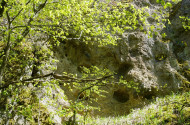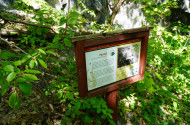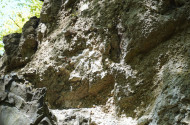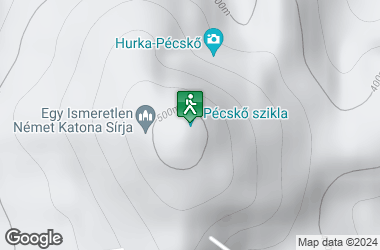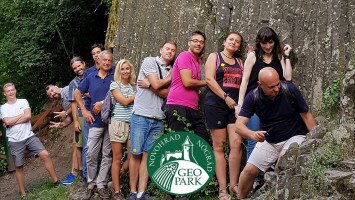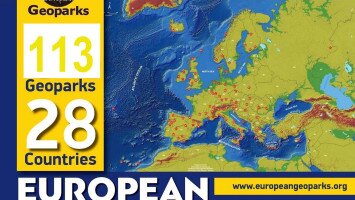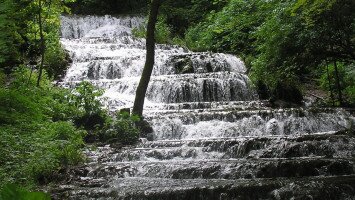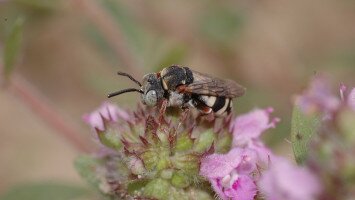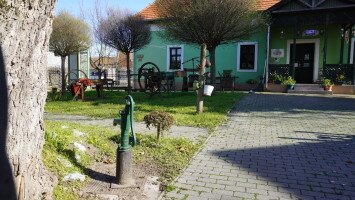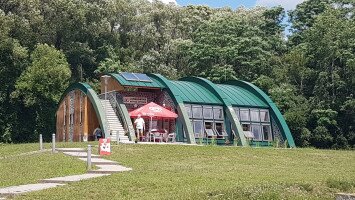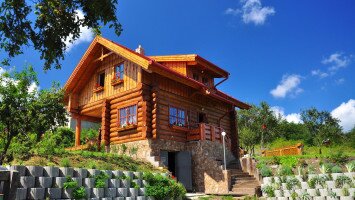Látogatható
Helyi jelentőségű védett természeti terület
Megközelítése
Salgótarjántól keletre, kb. 1,5 km-re emelkedik az 542 m magas Pécs-kő. A sziklát a Salgótarján – Somlyó-bányatelep – Pécskő-nyereg útvonalon célszerű felkeresni. A Pécs-kő nyeregtől kb. 20 perces sétával juthatunk jelzett úton (sárga sáv) a Pécs-kő csúcsához.
Keletkezése, felszínalaktani jellemzők
A Pécs-kő vulkáni kúpját a pliocén korban (2-3 millió éve) két szakaszú vulkáni működés hozta létre. Az első törmelékszórás volt, ebből épült a kúp főtömege. Anyaga szürke színű, különböző méretű kilövellt bombákból, lávafoszlányokból, salakos bazalttufából, agglomerátumokból áll. A második szakaszban hasadékok mentén ezt lávabazalt törte át. Az egyik hasadékkitöltés a jelenlegi csúcsnál magasabbra emelkedett, amit érdekes alakja miatt Hurka-Pécskőnek neveztek.
A fekete színű, tömött szövetű, jól hasadó bazaltot a kőbányászat lerobbantotta és kitermelte. Az 1930-as évek előtt öt nagyobb bánya is működött a területen, melynek során „utcakő”-nek való bazaltot termeltek ki. Ekkor készült a szirtre vezető, sziklába vájt lépcsősor. Irodalmi adatok szerint drótkötélpályás kőbánya is volt a Pécs-kő DK-i oldalán és oszlopos bazaltot is bányásztak. Földtani szempontból tanulságos feltárást mutat az ún. Kis-Pécskő. A bányászat során itt nem tártak fel bazaltáttörést, ami azt jelenti, hogy a Kis-Pécskő a nagy csúcs oldalkrátere, tehát annak magmakamrájából kapta lávaanyagát.
Már az őskorban megtelepedett itt az ember. A sziklacsúcs környékén 1960-ban végzett ásatások péceli és bronzkori kultúrához tartozó leletanyagot találtak. Pécs-kő várának történetéről okleveles említés nem maradt fenn. Romját elsőként egy 1802-ben készült térkép jelöli. Egy 1906-os várjegyzék az elpusztult erősségek közé sorolja. A helyi hagyomány úgy tartotta és ez ma is elevenen él, hogy a sziklatetőn egykor rablóvár állt. Bár a bazaltbányászat a Pécs-kőt részben átalakította, egy 1999-ben végzett régészeti kutatás keretében mészhabarcsos falazatrészeket és sziklába vésett falhelyeket, lépcsőket írtak le. A szikla északi oldalán található kisméretűüregek eredete sem tisztázott, vagy természetes zárványkimállások vagy kaptárkő-jellegű fülkék.
Növényzet
A bazaltsziklán kialakult jellegzetes növénytársulás fajai közül kiemelendők az alábbiak. A bazaltsziklán az északi fodorka (Asplenium septentrionale), a telepített fenyvesekben a szálkás pajzsika (Dryopteris carthusiana) egyedei is előfordulnak. A kora tavaszi bogláros szellőrózsa (Anemone ranunculoides) meglehetősen elszigetelt populációi találhatók itt. Sziklai cserjésekben a védett pannon madárbirs (Cotoneaster matrensis) töveivel találkozhatunk. A cseres- és gyertyános-kocsánytalan tölgyesekben kiterjedt állományban van jelen a kisvirágú pimpó (Potentilla micrantha), amely a területen reliktum jellegű fajnak tekinthető. A környéken a Pécs-kő és a Salgó bazaltkúpjairól ismert a Waldstein-pimpó (Waldsteinia geoides). A bazaltsziklán a sárga kövirózsa (Jovibarba hirta) is megtelepedett. A meglehetősen ritka, 2 m-es nagyságot csak nagyon ritkán elérő, cseres-kocsánytalan tölgyesekben előforduló mogyorós hólyagfa (Staphylea pinnata) is látható. A törmeléklejtőkőn a magas csukóka (Scutellaria altissima) is jelen van. Meglehetősen elszigetelt populációkkal képviselteti magát az ujjas keltike (Corydalis solida). A bazalttufán százas nagyságrendben fejlődik a sziklai ternye (Aurinia saxatilis). A sziklagyepekben és sziklai cserjésekben a tarka nőszirom (Iris variegata) is jelen van.

